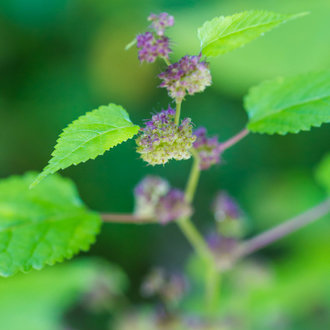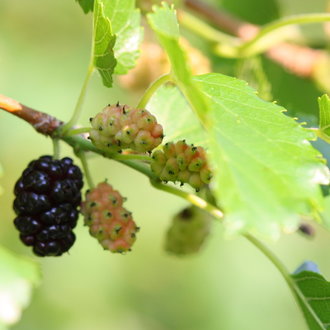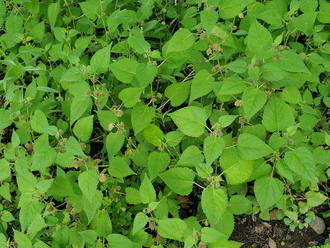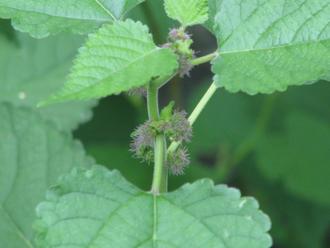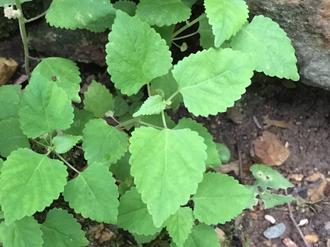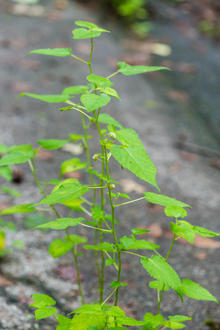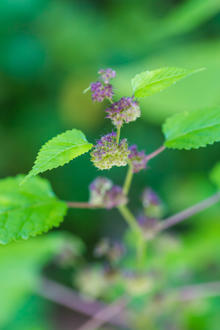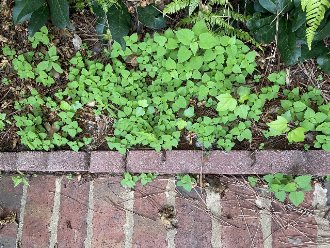Hairy Crabweed (Fatoua villosa (Thunb.) Nakai)
Also known as mulberry weed.
↑Summary
A weedy annual native from southeast Asia through Australia, and introduced in north America, where it has become invasive, especially in container nurseries.
↑Similar Plants
↑Habitat
In North America, primarily found in anthropogenic habitats, including landscaping and suburban gardens, urban areas, and container nurseries. It can occasionally be found in wild forests, but is most common on disturbed sites.
It is found in moist, shaded habitats.
↑Life Cycle
This plant is a summer annual with a short life cycle, often completing 2-5 generations in one growing season.
Seeds germinate in response to exposure to light, and usually only germinate in the top half inch of soil. Seeds germinate well on the surface or in top layers of mulch as well.
Flowering may begin as early as by the appearance of the third true leaf, and set fruit as soon as 12 days after the appearance of the second leaf. Seeds can germinate as soon as 30 days after maturing, and often germinate in the same season. The plant can complete multiple generations in one year, but established plants will continue growing and producing seed throughout the growing season as long as conditions are favorable.
Most seeds fall close to the parent plants, but some seeds are flung a distance of a few feet by explosive dehiscence. Long-distance distribution of the seed happens primarily through contaminated nursery stock, but this plant may also benefit from other seed-distribution mechanisms.
↑Faunal Associations
We have not located much information on insect relationships to this plant in North America; in its native habitat, two aphids of the Micromyzodium genus eat this plant.
This plant is thought to be wind-pollinated, although we have not found verification that this has been established. The flowers are showier than typical for species that are strictly wind-pollinated.
↑Control
The most effective control method for this species is to prevent its introduction and spread into new areas. It is mainly spread through container nurseries, so avoiding planting material from nurseries that you cannot verify to be free of this plant, is the best way to prevent its establishment. On a broader scale, reform of the nursery industry is necessary to curb this plant's spread. Gardeners can also prevent the local spread of this plant by avoiding transplanting plants or moving soil from any spot where this plant is found.
Because this plant can produce seed early in its lifecycle, it is critical to remove young plants as soon after they sprout as possible.
Where it is impractical to individually pull plants, germination of this plant can be prevented by applying a thick (2-3 inch) layer of mulch, but such heavy mulching can have negative consequences on other plants, sometimes stressing or damaging trees and shrubs, especially if the mulch is put close to their trunks.
Herbicides are used to control this plant in a nursery setting but are often ineffective in the wild or in a garden setting. The fast life-cycle of this plant and its high seed production make it more likely that other plants will be harmed more than it, by pre-emergent or post-emergent herbicides alike.
Removal of this species from a site is possible, but usually requires intense persistence through one or more growing seasons.
↑Uses
This plant has a number of uses in traditional medicine in its native range.
↑Links & External Resources
• Fatoua villosa (Hairy Crabweed) | USDA PLANTS Database (About This Site)
• Fatoua villosa | Go Botany (About This Site)
• Fatoua villosa | Biota of North America Project (BONAP) (About This Site)
• Fatoua villosa | NatureServe Explorer (About This Site)
• Fatoua villosa | Flora of North America (About This Site)
• Fatoua villosa | Missouri Plants (About This Site)
• Hairy Crabweed | Maryland Biodiversity Project (About This Site)
• Fatoua villosa (Thunb.) Nakai (Mulberry-weed, Hairy Crabweed) | Digital Atlas of the Virginia Flora (About This Site)



